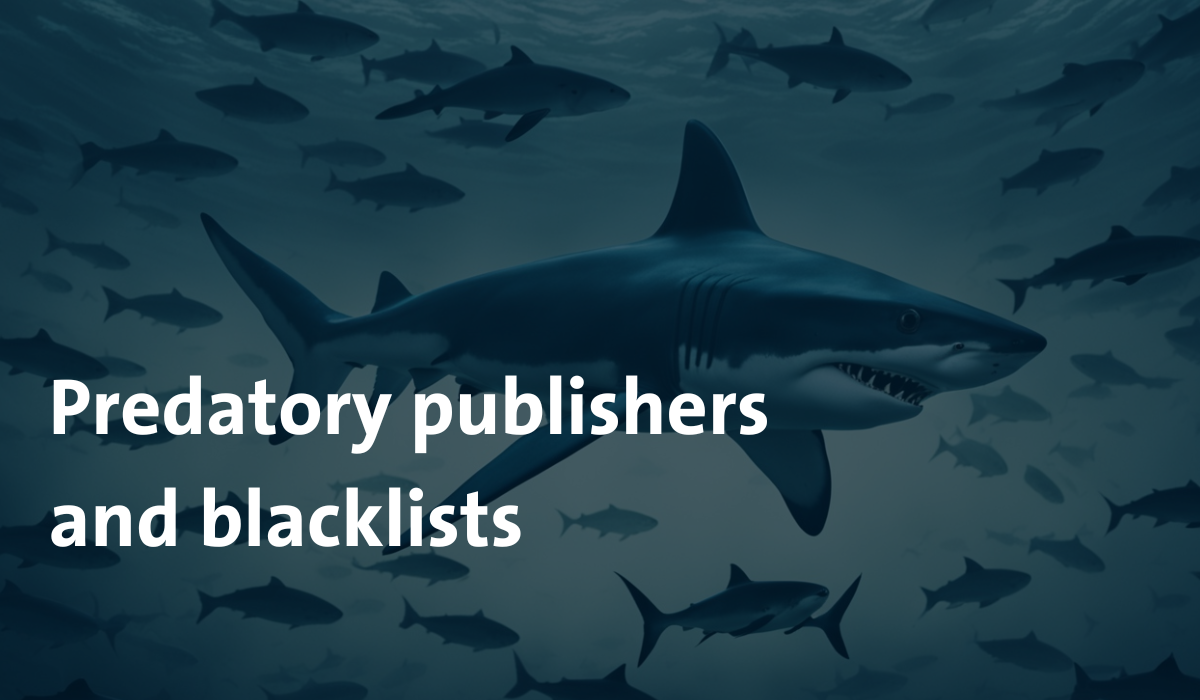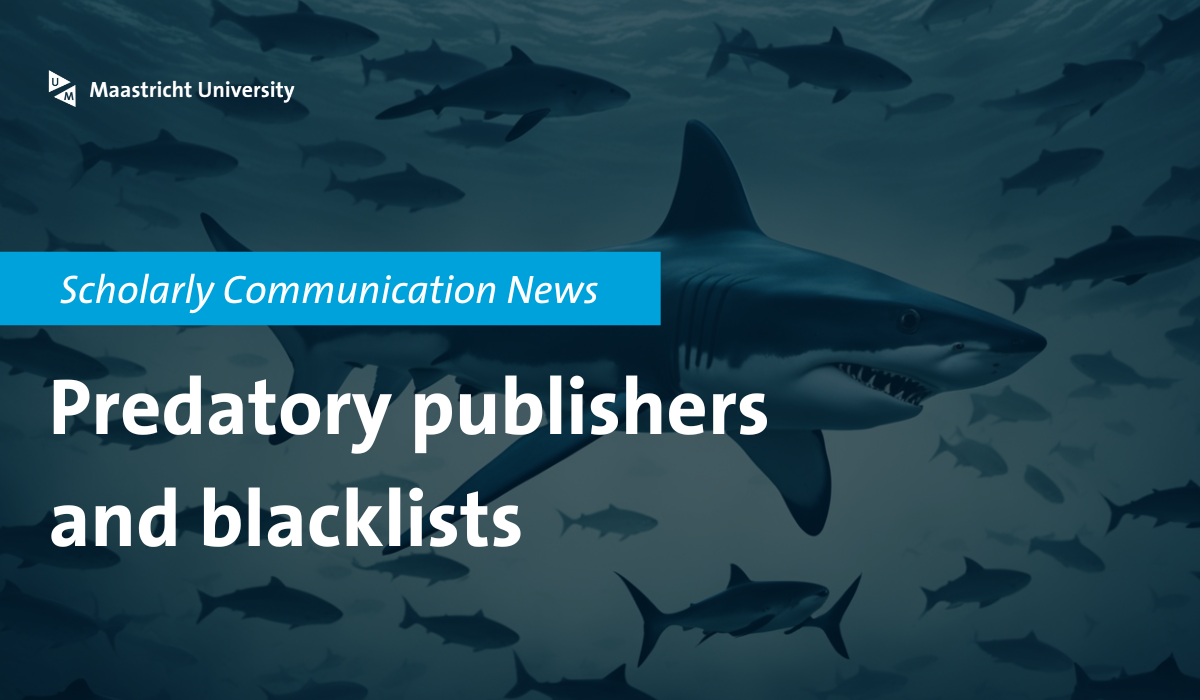Key points
- Blacklists have inherent limitations like being reactive, subjective criteria, quickly becoming outdated, lack of transparency, and legal risks from publishers.
- Whitelists like DOAJ, Web of Science, and Scopus are a better starting point, as they proactively define quality standards and have more objective evaluation criteria.
- Researchers should use a multi-step selection and screening following a publishing strategy, using whitelists, including checking journal details, using checklist tools, verifying indexing, seeking peer recommendations, and researching the publisher’s reputation.
- This comprehensive whitelist-focused approach safeguards research integrity and contributes to a more trustworthy scholarly publishing ecosystem.
Introduction
The rise of predatory publishing practices that exploit the open-access model has become a severe concern in academia.
We recently posted “Predatory and questionable publishing practices: how to recognise and avoid them” and updated our publishing guide with the “Predatory and questionable publishing practices” section. There, you find a complete overview, including a checklist, red flags, warning signs and an action plan for when things go wrong.
However, researchers keep asking us, “Why not a simple blacklist?”
While blacklists aim to identify and warn against these unscrupulous operators, their limitations and potential biases have led many to question their reliability. We recommend a more proactive approach based on respected whitelists and additional evaluation steps to ensure you publish your research results in a credible, high-quality venue.
Our journal selection guide integrates these steps with other selection criteria, such as topical fit and APC funding or discount.
The pitfalls of blacklists
On the surface, blacklists that flag potentially predatory journals seem like a helpful tool. However, a deeper examination reveals several inherent flaws:
- Reactive Nature: Blacklists only catch journals after they have already exhibited problematic behaviour, often too late for many researchers.
- Subjective Criteria: No universally agreed-upon definition of a “predatory” journal leads to subjective and potentially biased inclusion criteria.
- Rapidly Outdated: The scholarly publishing landscape is constantly evolving, with new journals emerging and existing ones changing status, making blacklists quickly obsolete.
- Lack of Transparency: The opaque processes behind some blacklists raise questions about conflicts of interest and the motivations driving their curation.
- Legal Risks: Publishers have sued blacklist creators, pressuring them to remove entries and further undermining the credibility of these resources.
The case for whitelists
Rather than relying on blacklists’ negative approach, a positive strategy focused on identifying and promoting legitimate, reputable journals is preferable. This is where respected whitelists come into play:
- Proactive Quality Standards: Whitelists establish transparent criteria that reputable journals should meet, proactively defining quality.
- Objective Evaluation: Criteria used by major whitelists like the Directory of Open Access Journals (DOAJ) and Web of Science are typically more objective and less susceptible to bias.
- Continuous Updates: Reputable whitelists are regularly updated, more accurately reflecting the evolving publishing landscape.
- Diverse Perspectives: By consulting multiple whitelists, researchers can gain a well-rounded understanding of journal quality from various viewpoints.
A Multi-Step Screening Process
While whitelists provide an excellent starting point, a comprehensive vetting process is crucial to ensure you select the most suitable journal for your research.
Here’s a recommended step-by-step approach:
- Start with a publishing strategy: Shortlist journals that fit your manuscript’s purpose and audience before eliminating a journal.
- Consult Trusted Whitelists: Begin by cross-referencing respected whitelists relevant to your field, such as DOAJ, Web of Science, Scopus, PubMed Central, and discipline-specific lists like those from the APA or MLA.
- Check our Open Access Journal Browser: The journal browser can be used as a whitelist because it combines the DOAJ index with the quality hybrid journals in our Read and Publish deals, in which you can publish open-access and take advantage of our APC discount arrangements.
- Review journal details: Carefully examine the journal’s website, editorial board, policies, acceptance rates, and other publicly available information to assess its legitimacy and quality standards.
- Use Checklist Tools: Initiatives like Think.Check.Submit. provides helpful checklists to evaluate journal practices systematically.
- Verify Indexing: Ensure the journal is indexed in appropriate databases for your field, indicating its credibility and reach.
- Seek Peer Recommendations: Ask experienced colleagues in your discipline for recommendations on reputable journals they have published in or are familiar with.
- Research the Publisher: Look beyond the specific journal and investigate the publisher’s overall reputation, history, and standing within the academic community.
Conclusion: better safe than sorry
By following this rigorous, multi-step process centred around whitelists, you can confidently identify high-quality publication venues while avoiding predatory ones without solely relying on the limitations of blacklists.
Ron Aardening, Scholarly Communication & Publishing Officer.
We would like to hear from you if you have experience with predatory publishing or tips on avoiding these journals. You can leave your comment below or share it with us via our team email address.
More information
Thanks for reading our posts and tips about academic publishing and Open Access.
- If you have questions, ideas, or feedback, please comment below or message us at openaccess@maastrichtuniversity.nl.
- You (UM scholars) can also engage with us and discuss this topic in our UMployee group [intranet].
- You (UM scholars) can discuss this topic during our weekly Open Access Publishing Hour.
- Please use our Ask Your Librarian service for prompt answers to concrete questions and issues.
Source links for this post:
- Predatory and Questionable Publishing Practices – Maastricht University Library.
- Open Access publishing checklist – Maastricht University Library.
- Select the right journal for your paper: 10 selection criteria to consider when you search for the right journal for your article – Maastricht University Library.
- Publishing deals and discounts – Maastricht University Library.
- How reliable and useful is Cabell’s Blacklist? A data-driven analysis. (2020). LIBER Quarterly: The Journal of the Association of European Research Libraries, 30(1), 1-38. https://doi.org/10.18352/lq.10339
- Blacklists and Whitelists To Tackle Predatory Publishing: a Cross-Sectional Comparison and Thematic Analysis – (2022). mBio 13:e01305-22. https://doi.org/10.1128/mbio.01305-22
- Navigating the Gray of Academic Publication: Avoiding Predatory Publishers and Creating Your “Whitelist”. (2021). Annals of Plastic Surgery 87(6):p e171-e179. https://doi.org/10.1097/sap.0000000000002902
- Pirate Ahoy! Is a New Beall’s List Necessary? – Digital Scholarship@Leiden



0 Comments